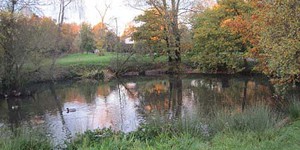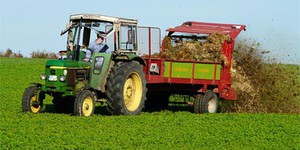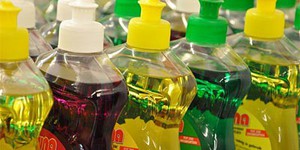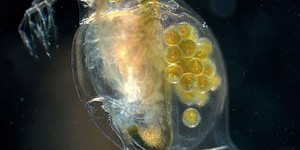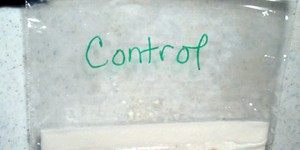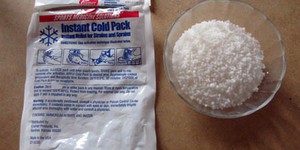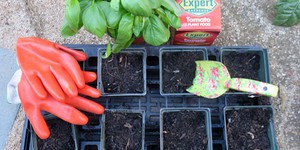Others Like “Too Much of a Good Thing? Study the Effect of Fertilizers on Algal Growth” (top 20 results)
|
Did you know that when you use fertilizer in your garden, it can eventually reach a lake, stream, or pond? There are many different chemicals present in fertilizers. How will they affect the aquatic organisms in the ecosystem? In this science project you will get to find out!
Read more
Do you know what plants need to grow? Sure, they need soil, water, and sunshine.
Everyone knows that. But here's a secret: they also need nitrogen. Plants use nitrogen to make DNA in their cells and
the proteins that lead to healthy stems and leaves. The problem is, although the Earth's
atmosphere is made up of 78% nitrogen, the form of nitrogen found in the atmosphere cannot be used by plants.
So how do plants get their nitrogen? Either through nitrogen deposits in the soil, or through…
Read more
Many people routinely use fertilizer for crops, gardens, and lawns. What people don't know is that each time they apply fertilizer, the fertilizer seeps through the soil into the water table. This can eventually lead to the contamination of a local water source, like a stream, pond, lake, bay, or ocean. This is an especially big problem for agricultural practices that frequently use large amounts of fertilizer on fields that are connected by irrigation channels. The run-off of fertilizer…
Read more
There is strong interest in "going green," including using products that cause less environmental damage when they are disposed of. In this environmental sciences project, you will compare the toxicity of "green" and conventional liquid detergents using worms as test organisms.
Read more
Do you know that many consumer products, such as sports clothes, cosmetics, and even food containers contain tiny silver particles? These so-called nanoparticles—usually 1–100 nanometers (a billionth of a meter) in size—are toxic to bacteria and fungi and therefore, are used to prevent them from growing on everyday items you use. But what happens if the silver nanoparticles get into the water; for example, when you wash off your makeup or clean your clothes? Do they…
Read more
Hydrogen peroxide (often used as a disinfectant) has also been approved for use in pesticides. This science fair project investigates whether hydrogen peroxide has any effects on seed germination or on roots of plant cuttings.
Read more
Instant cold packs are popular with coaches and parents for treating minor bumps and bruises. The instant cold packs are not pre-cooled—you just squeeze the cold pack and its starts to get cold. So how does it work? In this chemistry science fair project, you will investigate the chemical reaction that occurs in instant cold packs.
Read more
Plants need nitrogen to grow healthy stems and leaves. Although nitrogen is the most abundant element in the air we breathe, that form of nitrogen cannot be used by plants. Nitrogen contained in fertilizer, on the other hand, is readily taken up by plants. In this experiment, you will compare plants grown without nitrogen fertilizer to plants grown with nitrogen fertilizer.
Read more
Solar cells are popping up on rooftops everywhere these days and are a model for clean, renewable energy.
Did you ever look at those solar panels and wonder how we can get electricity produced by solar cells
when the sun is not shining? It is a great question because solar panels do not produce electricity when
it is dark outside. One strategy to overcome this challenge is to store the energy produced by solar
cells during the day in the form of a fuel that can be used at a later time. In…
Read more
Cake, cookies, pie, ice cream, hot chocolate, lemonade... Yum! What do all these delicious treats have in common? Sugar. In addition to providing sweetness, sugar adds bulk, flavor, and structure to foods. But is it necessary to add sugar to achieve sweetness? Can the same sweetness be achieved using sugar substitutes like artificial or natural sweeteners? In this project, you will test sugar and sugar substitutes and compare the sweetness of each in relation to sugar. In the end, your day will…
Read more
|
Explore Our Science Videos
Making False-Color X-ray Images with NASA Files from the Chandra Observatory
Build an Infinity Mirror | Science Project
Line-Tracking Robot: BlueBot Project #3


